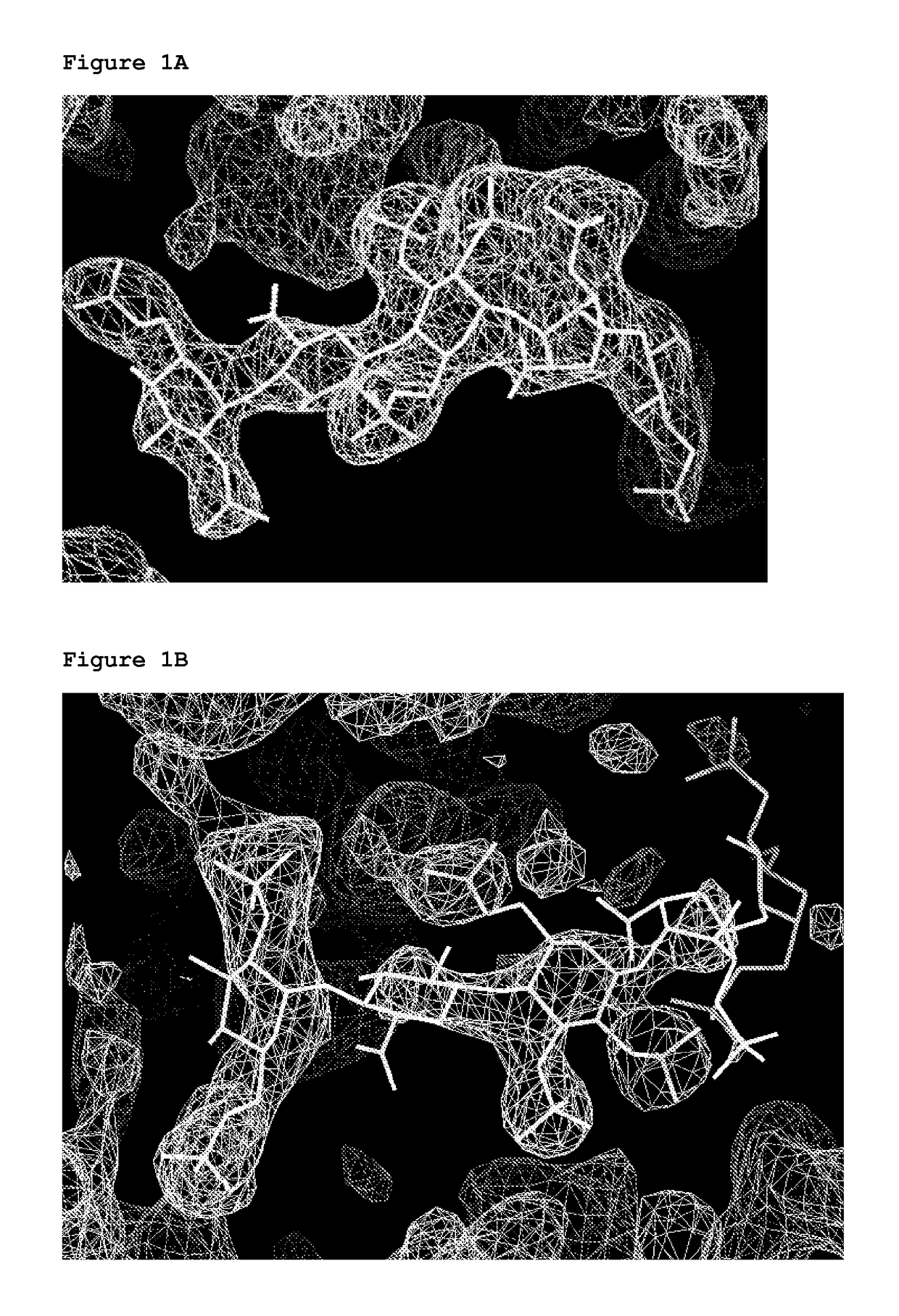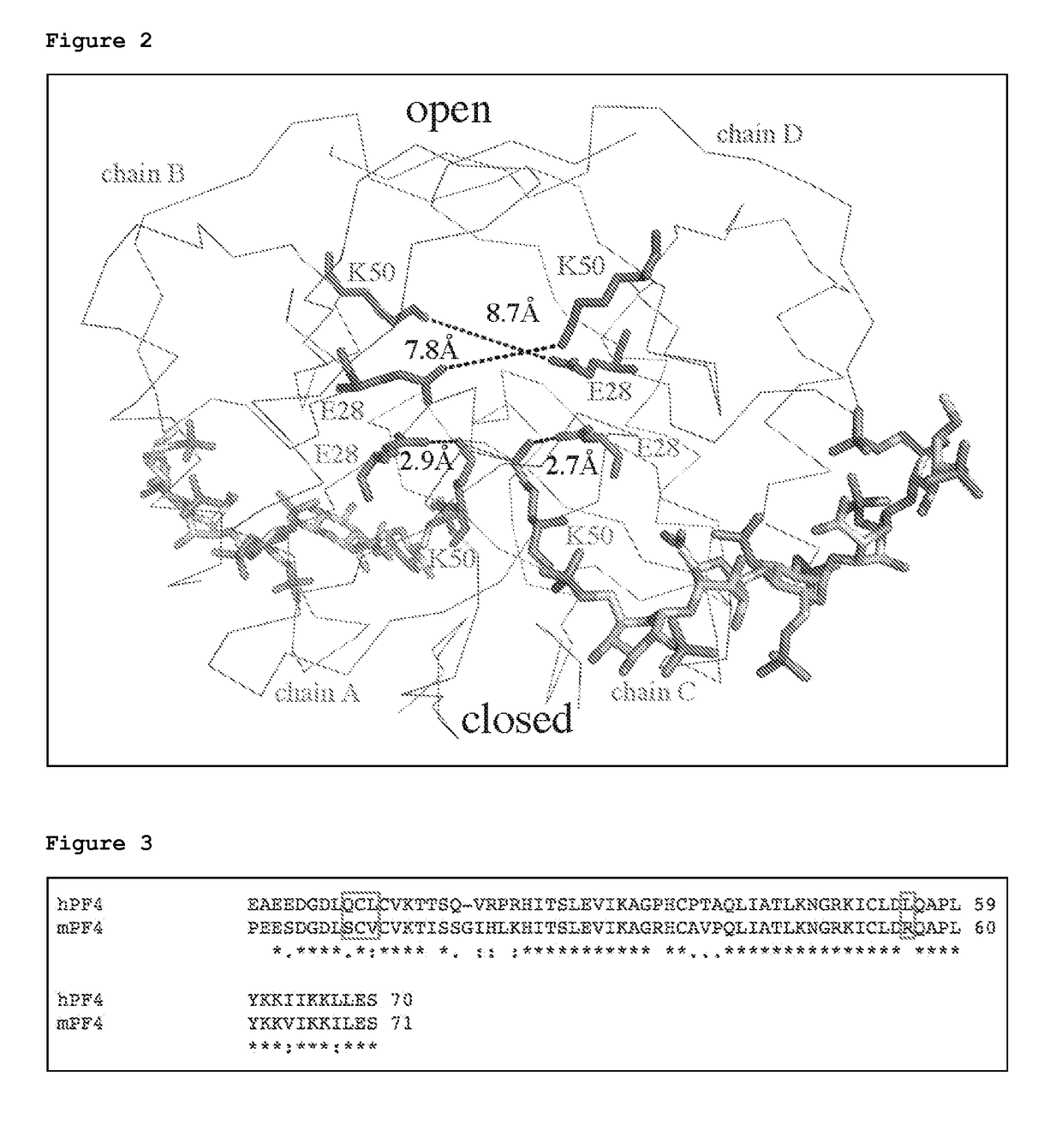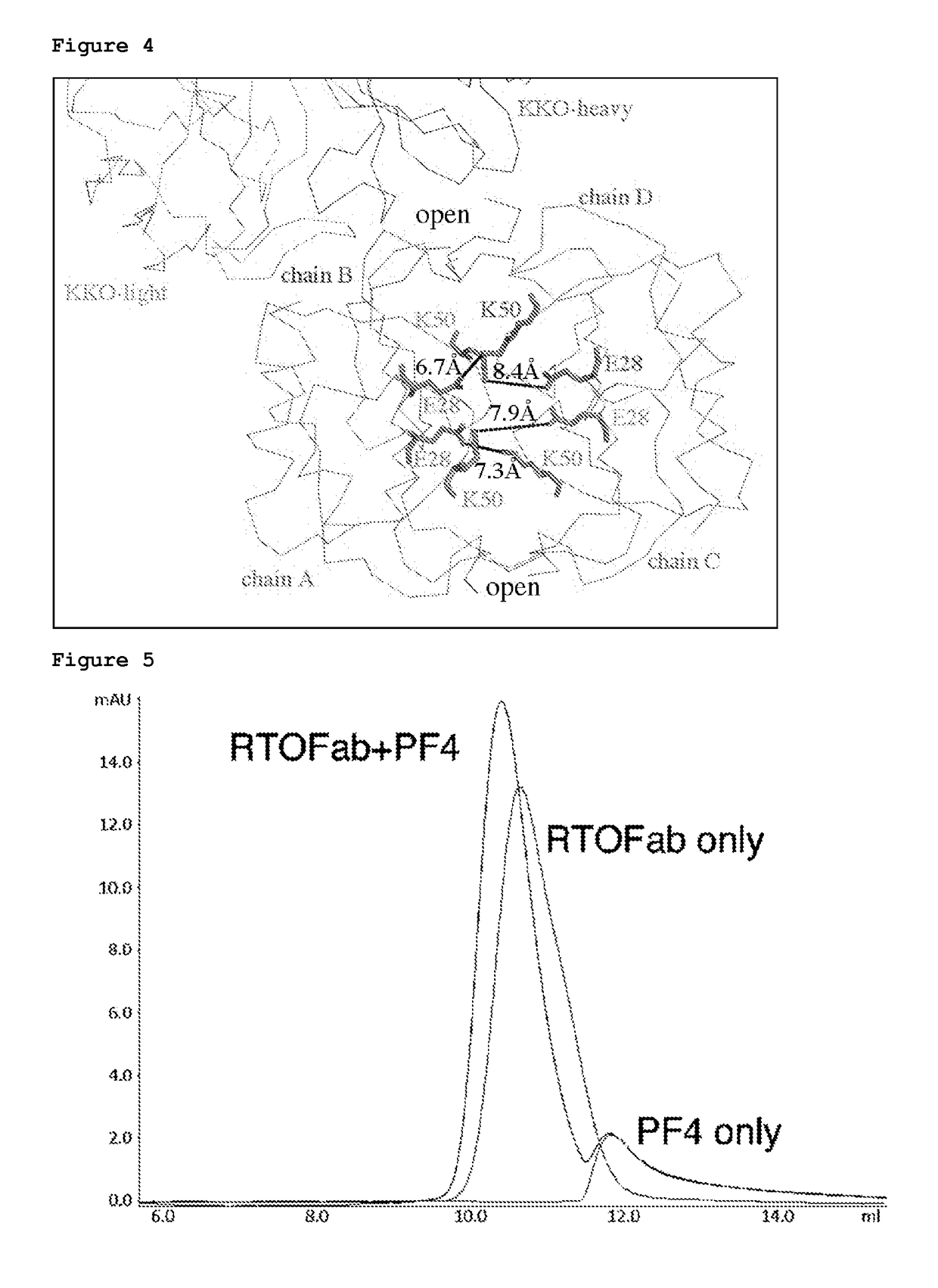Atomic description of immune complex that causes heparin-induced thrombocytopenia
a technology of immune complex and thrombocytopenia, which is applied in the field ofatomic description of immune complex that causes heparin-induced thrombocytopenia, can solve the problems of increased morbidity and mortality, significant additional treatment costs, and long hospital stays, and achieves the effect of reducing platelet factor 4 oligomerization and reducing pf4 oligomerization
- Summary
- Abstract
- Description
- Claims
- Application Information
AI Technical Summary
Benefits of technology
Problems solved by technology
Method used
Image
Examples
example 1
[0226]Heparin-induced thrombocytopenia (HIT) is an autoimmune thrombotic disorder caused by immune complexes containing platelet factor 4 (PF4), antibodies to PF4, and heparin or cellular glycosaminoglycans (GAGs). We solved the crystal structures of the: 1) PF4 tetramer / fondaparinux complex, 2) PF4 tetramer / KKOFab complex (a murine monoclonal HIT-like antibody), and 3) PF4 monomer / RTO-Fab complex (a non-HIT anti-PF4 monoclonal antibody). Fondaparinux binds to the ‘closed’ end of the PF4 tetramer and stabilizes its conformation. This interaction in turn stabilizes the epitope for KKO on the “open” end of the tetramer. Fondaparinux and KKO thereby collaborate to “stabilize” the ternary pathogenic immune complex. Binding of RTO to PF4 monomers prevents PF4 tetramerization and inhibits KKO and human HIT IgG-induced platelet activation and platelet aggregation in vitro, and thrombus progression in vivo. The atomic structures provide a basis to develop new diagnostics and non-anticoagula...
PUM
| Property | Measurement | Unit |
|---|---|---|
| Weight | aaaaa | aaaaa |
| Ratio | aaaaa | aaaaa |
| Optical density | aaaaa | aaaaa |
Abstract
Description
Claims
Application Information
 Login to View More
Login to View More - R&D
- Intellectual Property
- Life Sciences
- Materials
- Tech Scout
- Unparalleled Data Quality
- Higher Quality Content
- 60% Fewer Hallucinations
Browse by: Latest US Patents, China's latest patents, Technical Efficacy Thesaurus, Application Domain, Technology Topic, Popular Technical Reports.
© 2025 PatSnap. All rights reserved.Legal|Privacy policy|Modern Slavery Act Transparency Statement|Sitemap|About US| Contact US: help@patsnap.com



